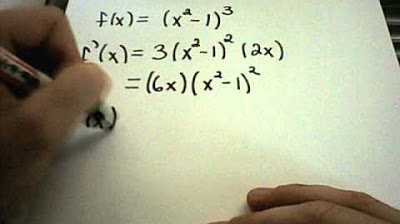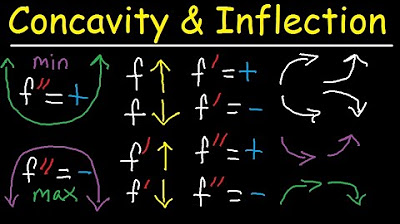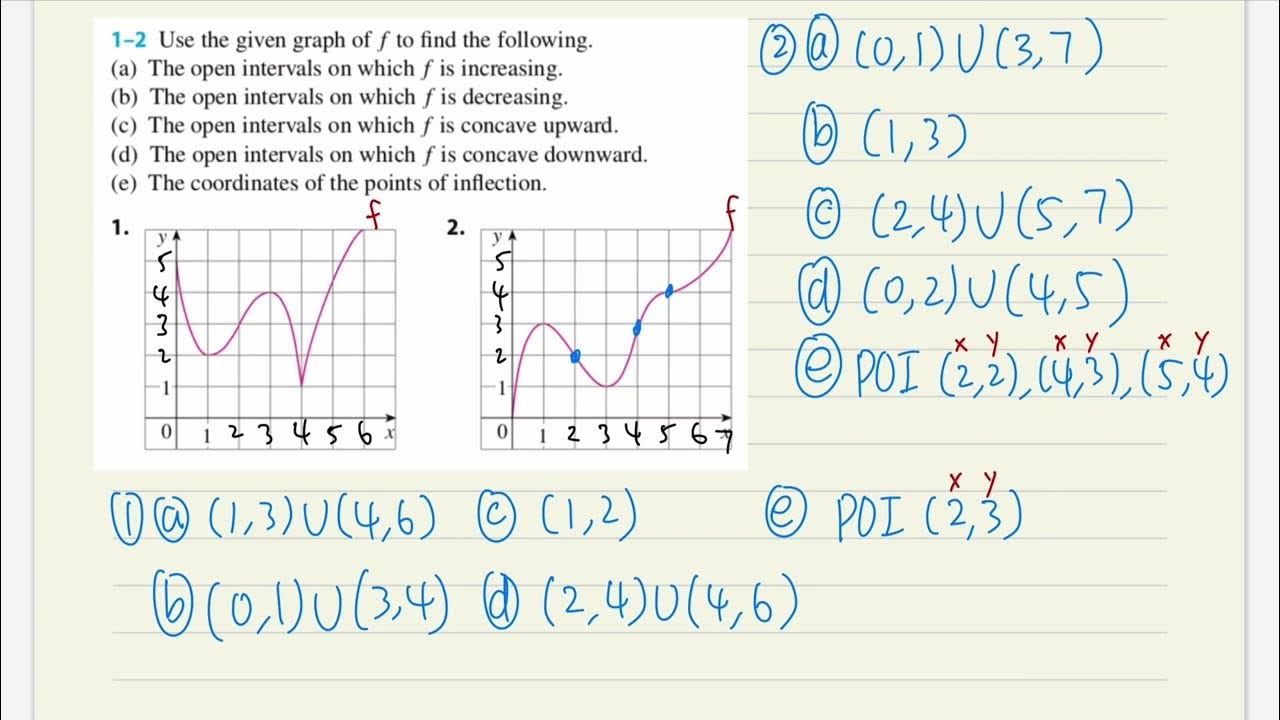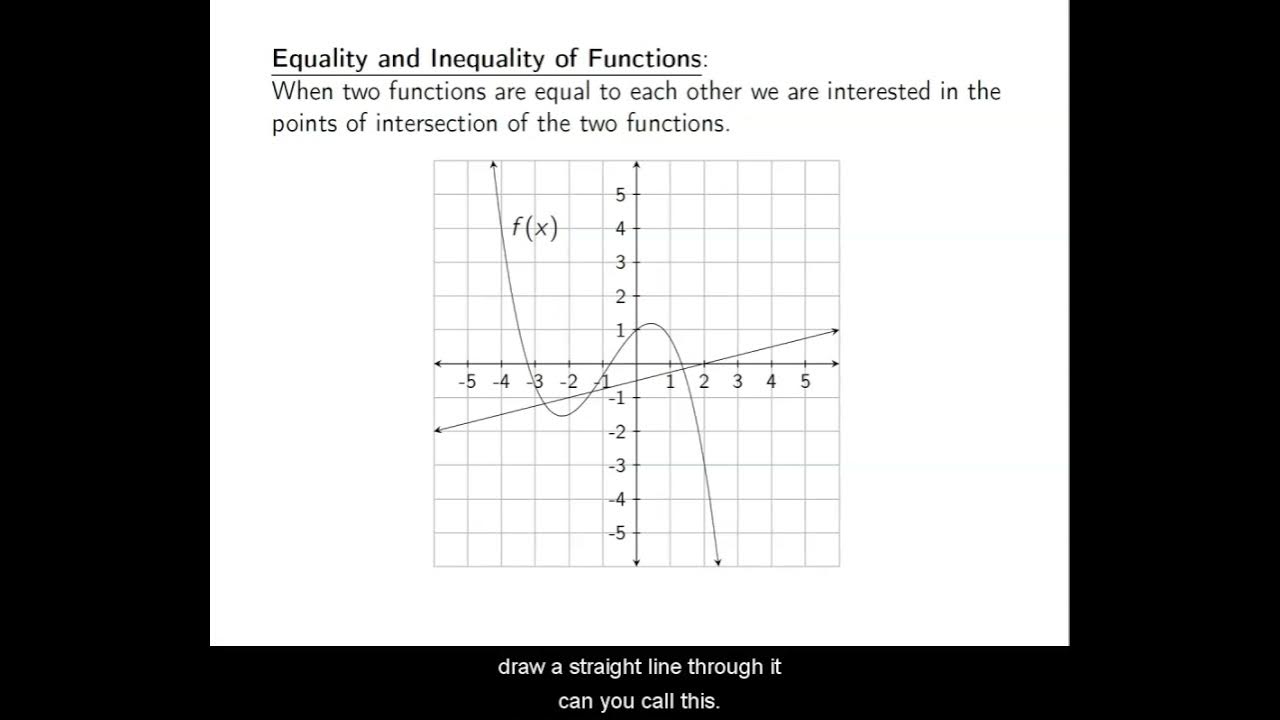Increasing and Decreasing Functions | Pre-Calculus
TLDRThe video script discusses the concepts of increasing, decreasing, and constant functions, explaining how to identify intervals where a function exhibits these behaviors. It uses graphical examples to illustrate the transition points and intervals, emphasizing the importance of understanding local maxima and minima, and how to represent these intervals using parentheses and union notation. The script aims to enhance the viewer's comprehension of function analysis.
Takeaways
- 📈 A function is considered increasing when its graph rises from left to right.
- 📉 A function is decreasing when its graph falls from left to right.
- 🔄 A function is constant when it maintains the same y-value, indicated by a horizontal line on the graph.
- 📊 The video script provides a visual analysis of a function's behavior across different intervals.
- 🌟 The first interval of increase starts from negative 2 (excluding) to negative 1 (excluding).
- 📈 The function is increasing from negative 4 to negative 2 and then from 2 to infinity.
- 📉 The function is decreasing from negative infinity to negative 4, and from 2 to 3.
- 🔄 The function is constant from negative 4 to negative 2 and from negative 1 to 1.
- 🔄 The second example shows the function is decreasing from negative infinity to negative 4, then increasing from 2 to infinity, with a constant interval from negative 2 to 0.
- 🔼 The third example identifies intervals of increase from negative infinity to negative 2, from 0 to 2, and a continuous increase from 2 to infinity.
- 🔽 The third example also pinpoints a local maximum at negative 2 and a local minimum at 0, with decreasing intervals surrounding these points.
Q & A
What is the definition of an increasing function?
-An increasing function is one where the graph rises as you move from left to right, indicating that the function's values are getting larger with an increase in the independent variable.
How can you identify a decreasing function from a graph?
-A decreasing function is characterized by a graph that goes down as you move from left to right, which means the function's values are getting smaller with an increase in the independent variable.
What does it mean for a function to be constant?
-A function is considered constant when its graph is horizontal, maintaining the same y-value over a certain interval. This indicates that the function's output does not change with variations in the independent variable within that interval.
How is the interval notation used to describe where a function is increasing?
-Interval notation is used to specify the range of the independent variable for which a function is increasing. For example, if a function is increasing from x = -2 to x = -1, it is written as (-2, -1) to denote that the interval includes all x-values between -2 and -1, but not including -2 and -1 themselves.
What does the script mean when it says 'the function is relatively constant'?
-When the script refers to a function as being 'relatively constant,' it means that within that specific interval, the function's value does not change significantly, though it may not be perfectly constant over the entire range.
How can you determine the intervals where a function is decreasing?
-To determine the intervals where a function is decreasing, you examine the graph and look for sections where it slopes downward. You then describe these intervals using interval notation, starting with the x-value where the decrease begins and ending with the x-value where it ends.
What is the significance of a local maximum in the context of the script?
-A local maximum is a point on the graph of a function where the function reaches a peak before the value starts to decrease. In the context of the script, it is referred to as a 'relative max' and indicates a turning point from increasing to decreasing behavior.
What is a relative minimum in the context of the function's graph?
-A relative minimum is a point on the graph where the function reaches a trough or the lowest point before it starts to increase. It represents a change in the function's behavior from decreasing to increasing.
How does the script illustrate the concept of infinity in relation to increasing and decreasing functions?
-The script uses the concept of infinity to describe the asymptotic behavior of functions. It indicates that a function can increase or decrease indefinitely as the independent variable approaches negative or positive infinity, respectively.
What is the union symbol (∪) used for in the context of describing function intervals?
-The union symbol (∪) is used to combine multiple intervals where a function exhibits the same behavior, such as increasing or decreasing. It allows you to describe the entire range of x-values over which the function is consistently increasing or decreasing by merging the separate intervals.
How can you correct an error in the script's labeling of function behavior?
-To correct an error in the script's labeling, you identify the incorrect label and replace it with the correct one. For example, if the script mistakenly labeled a constant interval with 'd' for decreasing, you would change it to 'c' for constant to accurately reflect the function's behavior.
Outlines
📈 Understanding Increasing and Decreasing Functions
This paragraph introduces the concepts of increasing, decreasing, and constant functions. It explains that a function is increasing when its graph rises from left to right, constant when it maintains the same y-value (horizontal line), and decreasing when it goes down. The video uses a graph to illustrate these concepts, pointing out specific intervals where the function is constant, increasing, and decreasing. It then focuses on identifying the intervals of increase, using x-values, and notes that the function increases from negative 2 to negative 1, excluding the endpoints. The paragraph also discusses intervals of decrease, starting at 1 and ending at 3, and constant intervals from negative 4 to negative 2 and from negative 1 to 1. The goal is to help viewers understand how to determine when a function is increasing, decreasing, or constant.
📊 Analyzing Function Behavior with Examples
This paragraph delves into examples to reinforce the understanding of increasing, decreasing, and constant functions. It uses a visual approach to identify intervals of change in the function's behavior. The first example shows a function that decreases initially, then increases, and remains constant. The second example illustrates a function that increases from negative infinity to negative two, then continues to increase from zero to two, decreases from negative two to zero, and remains constant from negative two to zero. The final example in this paragraph discusses a function with no significant constant intervals, highlighting local maximums and minimums. The function increases from negative infinity, has a local maximum at negative two (relative max), a local minimum, and then decreases again. This practical analysis helps viewers apply the concepts learned in the first paragraph to real-world examples.
Mindmap
Keywords
💡Increasing Function
💡Decreasing Function
💡Constant Function
💡Graph
💡Interval
💡Local Maximum
💡Local Minimum
💡Infinity
💡X Values
💡Union
💡Arrow
Highlights
The video focuses on understanding increasing and decreasing functions.
A function is considered increasing when its graph rises from left to right.
A function is constant when it maintains the same y-value and its graph is horizontal.
The function is described as decreasing when it goes down while moving from left to right.
The video provides a visual representation of a function that is relatively constant in one region.
The increasing interval of the function is from negative 2 to negative 1, not including the endpoints.
The decreasing interval of the function starts at 1 and ends at 3.
The function is constant from negative 4 to negative 2 and from negative 1 to 1.
The method to determine when a function is increasing, decreasing, or constant is demonstrated through examples.
The video introduces the notation 'd' for decreasing intervals and 'c' for constant intervals.
A comprehensive example is provided where the function is decreasing from negative infinity to negative 4, then increasing from negative 4 to negative 2, and then increasing from 0 to 2.
The concept of local maximum and minimum is introduced, with examples of relative maximum at negative 2 and relative minimum at 0.
The video concludes by explaining the intervals of increase and decrease, including the infinite range.
Another example is dissected, showing the function's increasing, decreasing, and constant behavior across different intervals.
The video emphasizes the importance of identifying intervals where the function's behavior changes significantly.
The practical application of understanding increasing and decreasing functions is highlighted for problem-solving.
The video serves as an educational resource for learning about the properties of functions in mathematics.
Transcripts
Browse More Related Video

Properties of Functions - Increasing vs Decreasing (Precalculus - College Algebra 9)

Increasing/Decreasing + Local Max and Mins using First Derivative Test

Increasing and Decreasing Functions and the First Derivative Test

Concavity, Inflection Points, Increasing Decreasing, First & Second Derivative - Calculus

Where is the function increasing, decreasing, concave up, concave down, and points of inflection?

Ch. 2.3 Getting Information from the Graph of A Function
5.0 / 5 (0 votes)
Thanks for rating: